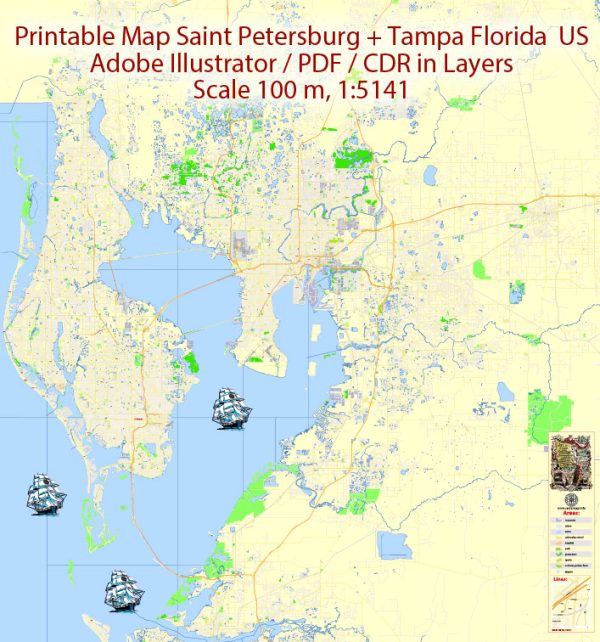Saint Petersburg and Tampa, both located in the Tampa Bay area of Florida, have distinct histories of urban development that have shaped their current landscapes. Here’s a brief overview of the urban development history of these two cities:
Tampa:
Early Years:
- Tampa’s history dates back to the 1820s when Fort Brooke was established as a military outpost during the Seminole Wars.
- In the late 19th century, the discovery of phosphate and the growth of the cigar industry fueled economic development.
- The arrival of the railroad in the 1880s further boosted Tampa’s economic prosperity by facilitating transportation and trade.
Cigar Industry Boom:
- Tampa became known as the “Cigar Capital of the World” due to the large number of cigar factories in the area, many established by Cuban immigrants.
- This period of economic growth led to the construction of Ybor City, a historic district that became the center of the cigar industry and a vibrant cultural hub.
Port and Naval Presence:
- Tampa’s strategic location along the Gulf Coast contributed to the development of its port, enhancing its role in shipping and trade.
- The establishment of MacDill Air Force Base during World War II solidified Tampa’s importance as a military hub.
Modern Expansion:
- In the latter half of the 20th century, Tampa experienced suburban expansion, with the development of new residential communities, shopping centers, and infrastructure.
- The construction of major highways and the growth of tourism, particularly with attractions like Busch Gardens, further propelled urban development.
Saint Petersburg:
Early Settlement:
- Saint Petersburg was founded in 1888 by John C. Williams, who envisioned it as a resort destination on the Pinellas Peninsula.
- The arrival of the railroad and the extension of the Orange Belt Railway played a crucial role in the city’s early growth.
Tourism and Real Estate Boom:
- The city experienced a boom in the 1920s, driven by real estate speculation and tourism.
- The development of waterfront parks, the iconic Vinoy Hotel, and the opening of the Gandy Bridge contributed to Saint Petersburg’s allure.
Decline and Revitalization:
- Like many Florida cities, Saint Petersburg faced challenges during the Great Depression and post-war era.
- In the late 20th century, efforts to revitalize the downtown area, including the construction of the Bayfront Center and the Mahaffey Theater, sought to attract residents and tourists.
Cultural Hub:
- Saint Petersburg has evolved into a cultural hub with museums like the Salvador Dalí Museum, the Museum of Fine Arts, and the Chihuly Collection.
- The city’s waterfront has been revitalized, and the Sundial St. Pete shopping and entertainment complex has become a focal point.
Both Tampa and Saint Petersburg continue to grow and evolve, with ongoing urban development projects, cultural initiatives, and a focus on sustainability shaping the future of these vibrant cities in the Tampa Bay region.


 Author: Kirill Shrayber, Ph.D.
Author: Kirill Shrayber, Ph.D.